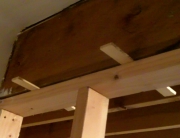Learn how easy it is to tune up your own car, following these step-by-step instructions and the accompanying video “How to Easily Tune-Up Your Own Car”.
Time Needed to Complete Job: 1 hour or more
DIY Savings by Doing it Yourself: $150-$350
Tools & Materials Needed
- The correct new spark plugs and new wires for the vehicle you will be working on (available from an auto parts store)
- Ratchet and socket set
- Spark plug socket (usually sold separately from the socket set)
- Anti-seize compound
- Phillips and flathead screwdrivers
- Gap setter (possibly will need, see note)
Note about spark plug gaps: The spark plugs for the car shown in the video (a 2004 Subaru Forester) come with pre-set gaps, therefore we did not need to set the gaps to do that particular tune-up job. Refer to the owner’s manual for your car, or inquire at your local auto parts store to find out if you will need to set the gaps on your new sparkplugs. If you do, refer to the video “How to Set the Gap on a Spark Plug” for detailed instructions on how to set the gaps.
- A lever or “breaker” bar. This can homemade from something you have around, such as a piece of pipe, metal tubing, or even a broom handle. The one used in the video was made from a piece of iron pipe, and was taped off around the ends to make it extra secure.
- Flashlight (1 or 2)
- Bungee cords
- Paper towels
Note about access: If possible, it is best to attempt this job during daylight hours on a sunny day, for the best possible lighting scenario.
Steps to Complete Job
Part 1 – Remove Existing Wires and Spark Plugs
1. Sequence note: It is easiest to keep track of what you are doing if you replace one wire and one spark plug at a time. Follow the instructions given in the video and in these written instructions, and then move on to the next spark plug and repeat, until all are done.
2. Locate the ignition coil and the wires attached to it that will lead to the spark plugs. The car in the video has 4 wires/spark plugs. Your car may have 4, 6, or possibly even 8 wires. Alternatively, your car may have a coil pack. If this is the case, please refer to the video “Coil Pack Overview” for an overview of the coil pack and the location of the spark plugs within it.
a. Remove any obstacles to access to the spark plugs and wires. In the video, we needed to unbolt the air box with a ratchet and socket, and we used bungee cords to push it out of the way. You may have similar obstacles, more obstacles, or none. It depends upon what type of car you have. The objective is to be able to remove the wires and have clear access to the spark plug area.
3. Remove the first wire. Pull it off at the ignition coil. Follow it down the side and remove the cover portion of the wire off the spark plug. Make certain that you pull it off by the cover and not the wire. Remove the entire wire and put it aside.
4. Identify which wire in the new set matches the length of the wire that you just removed, as the wires are different lengths. Attach the new wire at the ignition coil only for now. Set the bottom portion aside for now.
5. Remove the old spark plug.
a. Attach the spark plug socket to the extension that comes with the socket set. Note: You will not be using the ratchet just yet, as you will need to locate and secure the spark plug by hand.
b. Insert the spark plug socket into the hole. You will know when the spark plug is seated in the socket because you won’t be able to turn the extension to the left or to the right. It should feel snug.
c. Next, put the ratchet on, and attempt to loosen the spark plug by moving it forward, to the left, or towards the car dashboard.
Note: If the sparkplug is “seized” or “stuck”, you will not be able to do this with the ratchet alone, and will need to use your lever or breaker bar. See step d. If you are able to loosen it easily with the ratchet, then skip down to step d, part iv.
d. To loosen the spark plug with the breaker bar:
i. Insert the handle of your ratchet into the hole of the pipe or whatever tube you are using as a lever. This will give you much more leverage to loosen the spark plug.
ii. Ensure that the spark plug socket is still attached snugly to the spark plug.
iii. Move the breaker bar forward. It should loosen.
iv. At that point, you can take the breaker bar off and just use the ratchet to loosen it.
v. Then remove the ratchet and gently pull out the spark plug by hand.
Part 2 – Install New Spark Plug
1. Apply anti-seize compound to the threads of the new spark plug. This will help to keep it from seizing in the future.
6. Insert the new spark plug in the spark plug socket, with the extension attached to the other end. Make sure that the spark plug is seated snugly in the socket.
7. By hand, guide the new spark plug into position, and tighten it by turning to the right. It is important to do this by hand so that you can feel what you are doing and avoid cross-threading the spark plug.
8. After you have tightened it as well as possible by hand, put the ratchet on it, and tighten it just a little bit more. Don’t over-tighten.
9. Remove the ratchet and extension, and install the new wire over the spark plug, making sure the cover is secure.
Repeat the above procedure with the remaining spark plugs and wires, and that will be it. You will have just done a tune-up on your own car!
by See Jane Drill, Copyright 2013
Due to differing conditions, tools, and individual skills, See Jane Drill assumes no responsibility for any mistakes, damages, injuries suffered, or losses incurred as a result of following the information published on our website and in the videos and written instructions published through our website. Before beginning any project, review the instructions carefully, and if you still have any doubts or questions about how to complete the project, consult with local experts or authorities. Also, because codes and regulations vary greatly by location, you should check to ensure that your project complies with all applicable local codes and regulations. Always read and follow all the safety precautions provided by any tool or equipment manufacturer, and follow all accepted safety procedures.
See Jane Drill is dedicated to providing accurate and helpful do-it-yourself information. We welcome your questions, input and feedback about the information provided on this website.





Leave A Comment